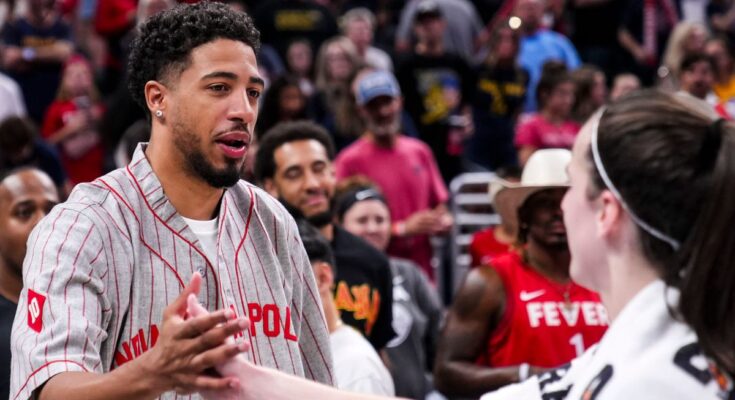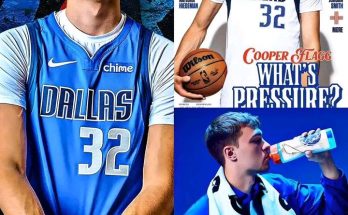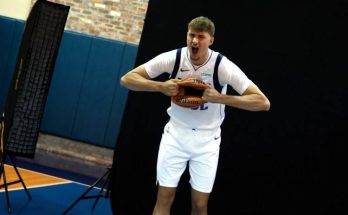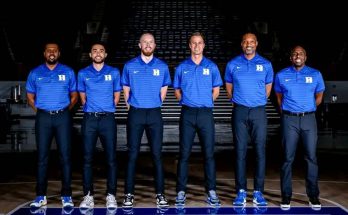Tyrese Haliburton and Caitlin Clark may come from two different teams, two different leagues, and even two different stages in their basketball journeys, but on Saturday the spotlight brought them together in a way that resonated deeply with fans in Indiana and across the basketball world. Haliburton, the All-Star guard for the Indiana Pacers, is navigating his own road back from injury, while Clark, the highly celebrated rookie star of the Indiana Fever, is adapting to the brutal grind of professional basketball after a historic college career. The two found themselves sharing not just a city and a fan base, but also the common language of recovery, resilience, and the pressures of carrying enormous expectations on their shoulders.
When Haliburton spoke about his injury recovery, there was a natural curiosity about how he balances his competitive drive with the patience required to heal. Athletes are often portrayed as invincible, but injuries have a way of reminding even the most dominant players that their bodies are fragile, that the process of rehabilitation requires humility and endurance. Haliburton has been one of the NBA’s breakout stars in recent seasons, and his style of play — a blend of creativity, vision, and relentless pace — is what makes him such an integral piece for the Pacers’ present and future. Yet, for all of his impact, he has not been immune to setbacks.
Caitlin Clark, on the other hand, is experiencing her first season in the WNBA, carrying an attention level rarely seen for a rookie. Her transition from Iowa, where she rewrote record books and transformed women’s college basketball into must-see television, to Indiana has been watched as closely as any debut in recent memory. The expectations have been staggering: to lead the Fever back into relevance, to draw fans into the arena, and to withstand the physicality of the professional game. And in that process, she too has had to confront the toll on her body, learning the hard way that the season is long and that her resilience will be tested just as much as her shot-making.
When Haliburton discussed recovery alongside Clark, it wasn’t just a superficial moment of two athletes speaking on parallel paths. It was a reminder of how sports in Indiana, a state where basketball is woven into the very identity of the community, connects players across gender and league lines. Fans have packed arenas for generations to support the Pacers and the Fever, and now they see their stars walking similar roads. The conversation revealed both of them as human beings — competitors who want to be on the court but who must also be honest about their physical limitations.
Haliburton explained that recovery has been as much mental as it has been physical. He pointed out that injuries force athletes into a space where they can no longer rely purely on instinct. For him, watching games from the sidelines has been agonizing because he knows his team relies heavily on his playmaking. But in those moments, he has also grown, finding ways to be a leader without playing, supporting teammates vocally, and understanding the game from a new perspective. Clark nodded in agreement, noting that she too has learned how to approach the game with patience. She admitted that the WNBA is faster, more physical, and more relentless than anything she faced in college. And while her confidence remains unshaken, her body has felt the grind, and recovery routines have become a daily necessity.
The image of Haliburton and Clark discussing their recovery journeys struck a chord because it highlighted something many fans overlook. For every dazzling pass Haliburton delivers or deep three-pointer Clark drains, there is a hidden side — hours in the training room, cold tubs, stretches, therapy sessions, and the mental strain of wondering when the body will fully cooperate again. Both athletes understand that fans see only the performances, not the preparation or the pain, but they wanted to make it clear that recovery is just as much a part of the story as any highlight reel play.
Another key theme from Saturday’s conversation was the shared weight of expectations. Haliburton is expected to be the face of the Pacers, to push them into contention in an Eastern Conference filled with powerhouse teams. Clark, meanwhile, has been handed the responsibility of reviving a franchise that has struggled for years to find consistent success. For both, their ability to remain healthy and perform at a high level is not just personal but communal. They carry the hopes of Indianapolis sports fans, many of whom see basketball as more than entertainment. In Indiana, it is culture, heritage, and pride.
Haliburton made it clear that he looks up to Clark’s determination, especially considering the level of attention she has received. He joked that his own journey into the league was relatively quiet compared to the spotlight that has followed Clark from the moment she entered the WNBA. Clark, in turn, expressed admiration for Haliburton’s leadership with the Pacers, saying she’s inspired by how he balances being a star player with being a great teammate. These exchanges weren’t just polite compliments; they reflected a mutual respect that Indiana fans could celebrate.
Beyond their words, the symbolism of Haliburton and Clark appearing together can’t be ignored. In recent years, the conversation around supporting women’s sports has grown louder, and Clark has been at the center of that movement. Having a star like Haliburton standing beside her in solidarity and speaking about common experiences gives legitimacy to the idea that men’s and women’s basketball, while different, share the same emotional core. It shows that recovery, competition, and resilience aren’t limited by league or gender. They are universal elements of the game.
Both athletes also spoke about the role of community in their recovery. Haliburton acknowledged that Indiana fans have been patient and supportive, reminding him that his health is more important than rushing back. Clark echoed that sentiment, saying she feels the energy of fans who come to watch her play, but also appreciates when people understand the demands on her body. For both, there was an understanding that their careers are marathons, not sprints, and that taking care of themselves now ensures longer, more impactful futures.
The conversation took on an even deeper meaning because of where both athletes are in their careers. Haliburton is entering his prime years, looking to establish himself as one of the league’s elite guards. Clark, meanwhile, is just beginning her professional career, with years of growth and challenges ahead. Their shared dialogue about recovery was a bridge across those different phases, a recognition that no matter where an athlete is in their journey, the lessons of patience, discipline, and resilience remain the same.
It is easy for fans to romanticize recovery stories, to frame them as inspirational arcs where athletes overcome adversity and return even better. But Haliburton and Clark did not sugarcoat the realities. They spoke honestly about the frustration of setbacks, the boredom of repetitive rehab exercises, and the uncertainty that lingers in the back of the mind — the fear of re-injury, the worry of lost time, the pressure to return before fully ready. That honesty was refreshing, and it resonated because it stripped away the heroic narratives and replaced them with authenticity.
What stood out most was the way they leaned into each other’s experiences. Haliburton offered encouragement, telling Clark that the lessons she learns in her rookie year will serve her for the rest of her career. Clark smiled and admitted that watching Haliburton’s composure in high-pressure situations gives her something to aspire to. In that moment, it became clear that recovery isn’t just about the physical act of healing but also about the community of support that surrounds an athlete.
The significance of their dialogue stretches beyond Indiana. It represents a broader movement in sports where male and female athletes are increasingly seen as part of the same cultural fabric. Just as Clark has brought unprecedented attention to the WNBA, Haliburton has helped redefine what leadership looks like in the NBA. Their shared moment underscored the idea that basketball is a shared language, one that connects players and fans across boundaries.
Ultimately, Saturday’s discussion wasn’t about injuries as much as it was about identity. Both Haliburton and Clark are trying to define themselves not only as stars but as people capable of carrying the burdens placed upon them. Recovery is simply one aspect of that journey, but it is one that reveals character in ways statistics never can. Fans in Indiana will remember this conversation not just for what was said, but for what it symbolized: two athletes, bound by their love for the game, standing side by side in vulnerability and strength.
As the Pacers prepare for another grueling season and the Fever continue their climb toward relevance, Haliburton and Clark will each face new challenges. There will be more injuries, more moments of doubt, more times when recovery feels endless. But the solidarity they showed on Saturday is a reminder that they do not walk those paths alone. Their resilience belongs not just to themselves but to every fan who sees a piece of their own struggle in the way these athletes confront theirs.
Basketball in Indiana has always been about more than wins and losses. It’s about community, perseverance, and the belief that the game can teach us lessons far beyond the hardwood. On Saturday, Tyrese Haliburton and Caitlin Clark embodied that spirit, turning what could have been a simple update on injuries into a powerful reflection on what it means to endure, to recover, and to keep striving toward greatness no matter the obstacles in the way.
In time, both will return to full health, and fans will once again cheer their dazzling plays, forgetting perhaps the grueling recovery that made those moments possible. But for now, their willingness to share this side of their journeys is a gift — a reminder that behind every athlete is a human being, vulnerable yet resilient, tested yet unbroken, and always ready to fight for another day on the court.



